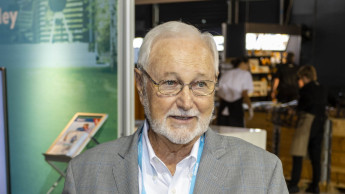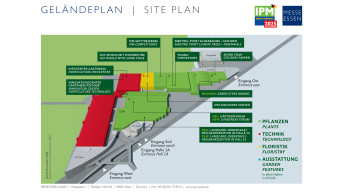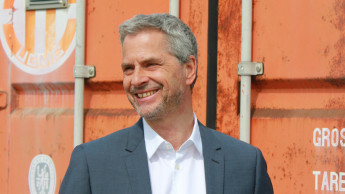Although the French DIY market is reporting sales growth of 4.4 per cent for 2005, this increase was generated solely by new openings of large-format stores
Figures presented by Banque de France show that prices meanwhile have a major role to play, with the volume of products sold positioned at 0.1 percentage points above the price. According to Rémy Dassant, who is responsible for market surveys at Unibal, this shows that goods from China at cutthroat prices are putting pressure on the average value of goods. This is causing suffering to suppliers by reason of shrinking margins and to retailers as well, since their sales/m² have remained constant for at least two years now. The figure was € 2 682 in 2005 (+1.4 per cent on 2004). “For the past two years sales growth has been practically identical with the increase in retail space. But watch out, if companies continue to open new stores, they will simply cannibalise the existing ones and sales/m² will start to fall,” warns Rémy Dassant.
69 per cent market share for DIY stores
The DIY stores, which are today able to notch up a market share of 68.5 per cent, are proving to be the market force with the greatest dynamic strength. Their sales have seen growth of 5.4 per cent to € 12.80 bn, which can mainly be attributed to the many new openings. In 2005, 92 new DIY stores were launched (2004: 60). As a result, the total number of stores rose by 4 per cent to 3 178 and floorspace expanded by 5.1 per cent to 7.051 mio m². There has been a specially strong increase in the number of warehouse-style stores. This is made clear by the fact that the garden segment, with a share of 12.5 per cent, has been forced to yield first place to installation/plumbing (13.7 per cent) and decoration (13.2 per cent).
The supermarkets and hypermarkets succeeded in increasing their sales (excluding garden) by 1.1 per cent to € 1.36 bn, resulting in a market share of 7.1 per cent. At 40 per cent, garden products represent the largest share (€ 813 mio), and the typical DIY ranges include automotive/bikes (36 per cent), electrical/lighting (23 per cent), decoration (17 per cent) and tools (12 per cent).
Builders’ merchants’ retail sales rose by 3.5 per cent to € 4.15 bn, a fact that Rémy Dassant attributes to the increasing competition from warehouse stores, which have seen their growth exceed that of traditional DIY stores.
Bringing up the rear are the traditional hardware dealers, who recorded a 2.2 per cent drop in sales to € 0.84 bn. Which means that this particular distributive segment accounts for a market share of no more than 4.4 per cent.
120 stores for Brico Dépôt
As had been the case in previous years, the tone was once more set by Brico Dépôt in 2005. Kingfisher’s French discount format recorded a sales increase of 17 per cent to € 1.65 bn. With a current total of 73 stores, the company has raised its growth target in France from 100 to 120 outlets. However, not even Brico Dépôt can escape from the general market trend: figures for the first four months published in May 2006 reveal that, though sales may be increasing by somewhat more than 13 per cent, the increase in like-for-like terms is only 1 per cent. French consumers cannot be won over by price alone.
Castorama, the group’s other retail chain, is indeed profiting from its strategy of store “revitalisation”, but its position is still no better than average. Occupying second place in the French DIY market, the company achieved sales of € 3 bn in 2005, which amounts to an increase of 0.8 per cent.
Kingfisher managed to grow its market share in France by around 2 percentage points, a figure that was also achieved by the Leroy Merlin group. With sales of € 3.4 bn, the Leroy Merlin banner was able to maintain its position as number one in France. It has a strong TV presence as a sponsor of a DIY show. The group is pursuing its expansionist policy with a number of different trading formats (Leroy Merlin for cities, Bricoman for discount stores, Weldom for smaller catchment areas). The remaining 16 Obi outlets have been trading under the Weldom logo since the end of June this year, which means the Weldom network now numbers something approaching 300 stores. Since 2004 Leroy Merlin has had a majority stake in the Domaxel head office. The disappearance of Obi from the DIY landscape is only a logical consequence of this, since both formats are positioned in the medium-sized segment.
Bricomarché is also going for a variety of differently sized formats, having developed the Logimarché retail concept (540 m² or 800 m² + an outdoor yard of 300 m²). The group relies on Arena, the international buying cooperative, which intends to open up to new members in the future.
Mr. Bricolage’s change of course
Mr. Bricolage seems to have successfully changed course in 2005, following the problems of the preceding year. With consolidated net sales of € 470 mio, Mr. Bricolage SA (head office and 78 corporate stores) may have sold 3 per cent less, but the profitability of the 78 stores has risen by € 2.3 mio and that of the service division by € 4.9 mio. The 422 Mr. Bricolage stores in France and abroad achieved sales of € 1.595 bn (+1.6 per cent). The Catena stores (131) made € 137.6 mio. And even though 20 Catenas were closed down, work continued to be done on the finer points of the sales concept that is to be implemented this year. An increase in floorspace (+76 000 m²) is on the agenda for the Mr. Bricolage line, along with further conversions to the two formats “au Coeur de la Maison” and “au Coeur des Métiers” (42 stores). International commitment is one pillar of the business: Mr. Bricolage has four stores in Bulgaria (shortly to be five), one in Portugal, two in Spain, 23 in Belgium and two in Uruguay (three in future). One store is operated in each of Argentina and Morocco, and preparations are under way for entry into the Romanian market (Bucharest).
Bricorama is also positioned somewhat below the average for the market in terms of sales. The company achieved € 440.72 mio in France (+0.74 per cent like-for-like). The group, which has appointed Erik Haegeman to the newly created position of director general, is pursuing the expansion of its two sales formats Bricorama and Batkor, and working on the centralisation of buying activities. The group has opened stores in Spain (three at present) and in Algiers, north Africa.
It must be said that the smaller groups have no need to conceal their results either. Heading the field is Cofaq, with a central buying office that recorded sales of € 230 mio (+12 per cent). The company is planning to expand its Brico Pro format to 55 outlets by the end of 2006. A similar tendency is evident at Le Club – Les Briconautes, where the central buying office notched up sales of € 250 – 275 mio (around 15 per cent more than in 2004) and is watching its number of stores grow constantly. The total will be 200 at the end of 2006 (2005: 135).
Many a retailer has overhauled his buying strategies with the aim of achieving better prices, has worked out concepts for bathrooms, décor or tools and equipment in order to improve his margins, but the prospects for 2006 are still uncertain. The early part of the year didn’t go well for anyone, and nobody can say whether consumers will make further cuts in their spending to the detriment of do-it-yourself.
Download:

 Menü
Menü














